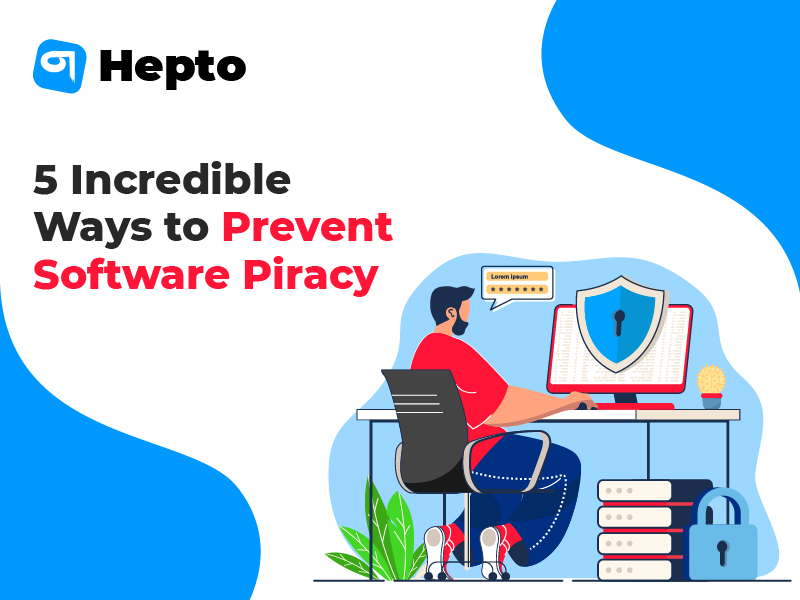Software Piracy 5 Incredible Ways to Prevent Software Piracy
Software Piracy describes the act of illegally using, copying or distributing software without ownership or legal rights. It is copying, installation, distribution, modifying, use, or sale of software without a license. The software industry is facing huge financial losses due to software piracy. Today the majority of software is purchased as a single-user license which means that only one computer may have that software installed on it at one time and copying that software to multiple computers or sharing it with your others without multiple licenses is considered software piracy, which is illegal. The users who participate in software piracy is referred to as a pirate or software pirate. In this blog, we are going to discuss the major forms of software piracy and the more powerful ways to prevent software piracy.
What is Software Piracy?
Software Piracy is the act of illegally installing, using, distributing, selling, modifying, or copying software without having proper ownership, license agreement, or legal rights. According to recent statistics, the pirated software accumulates 37% of all software used worldwide, occupying 6.2% of the most pirated software on the web. With advanced technical knowledge, the percentage of pirated software is growing every day and it can be stopped only by imposing strict regulations against the pirates.
Major Forms of Software Piracy
The pirated software is available anywhere, to anyone, at any time and the unscrupulous computer systems retailers a few blocks down the street, pirated programs are sold for a pittance. A few types of illegal copies of software require technical skills and the remaining includes using the software devoid of proper authentication and ownership. The following are some of the major forms of pirated software circulated among computer users.
Soft lifting - commonly used in both businesses and homes by sharing a program with someone who is not authorized by the license agreement to use it.
Hard Disk Loading - a form of piracy involves loading an unauthorized copy of software onto a computer being sold to the end-user.
Renting - a copy of the software is rented out for temporary use, without the permission of the copyright holder.
Counterfeiting - producing duplicate copies of the software, making it look authentic and as much like the original product as possible.
OEM Unbundling - selling stand-alone software originally to be included with a specific accompanying product.
Online Piracy - also called Internet piracy, with a rapid increase in internet connection speeds, the exchange of software on the Internet has attracted an extensive following.
5 Incredible Ways to Prevent Software Piracy
Use a License Key Management System
The activation of your software with license keys and provide those keys to customers who pay for the software. With competent tools create the license keys on your own server and ensure that the tool perfectly authenticates the license keys through your servers without raising new issues.
Introduce a Subscription Model
An introduction of a subscription model is a smart move that works great against pirates. It allows the paid customers only to log in to your website and download the software, minimizing the risk of piracy to a great extent.
Release a New Version of the Pirated Software
Whenever your software is pirated, keep working on your software product and release a new version equipped with more features and functionalities so that the pirated version will lose its pirated software relevance, and seek the new version.
Utilize Copyrights, Patents, and End-User Agreements
The End-user License Agreement protects your copyright rights and your software can be protected by copyrights and patents. This prohibits the end-users from selling, modifying, distributing, sharing, or using the software with other users without the permission of the owner.
Use Software Product Keys
The Software Product Keys are unique for each purchaser and the software users cannot run or install without software product keys. It is one of the strongest types since the product key is based on the user’s individual computer.
Final Thoughts
Fighting against Software Piracy is a challenging task both for the software developers, owners, and the public at large. The public and private sectors must do everything to limit software piracy as much as possible. Now with the help of this blog, you know the major forms of software piracy and how it affects users, and how you can prevent software piracy, it’s your turn to run an extra mile to stop software piracy. Keep in mind that using all open-source platforms that doesn’t protect the rights of the copyright holder strictly.
